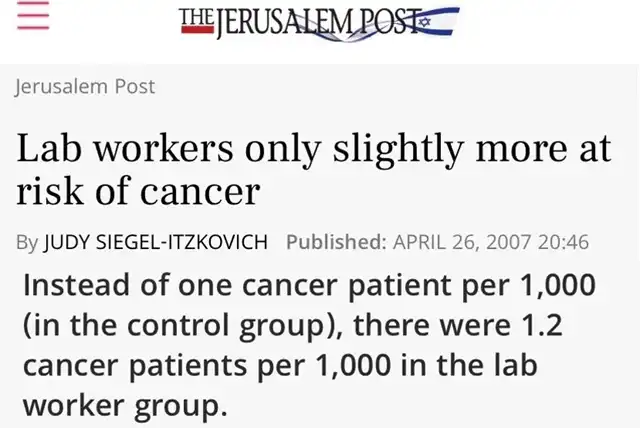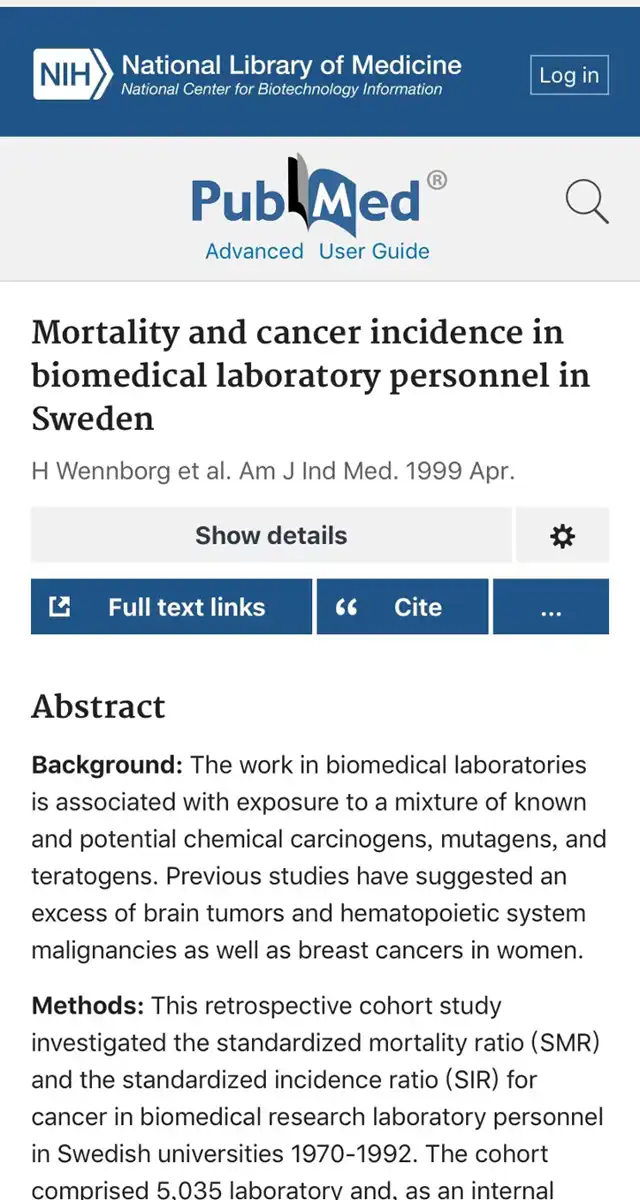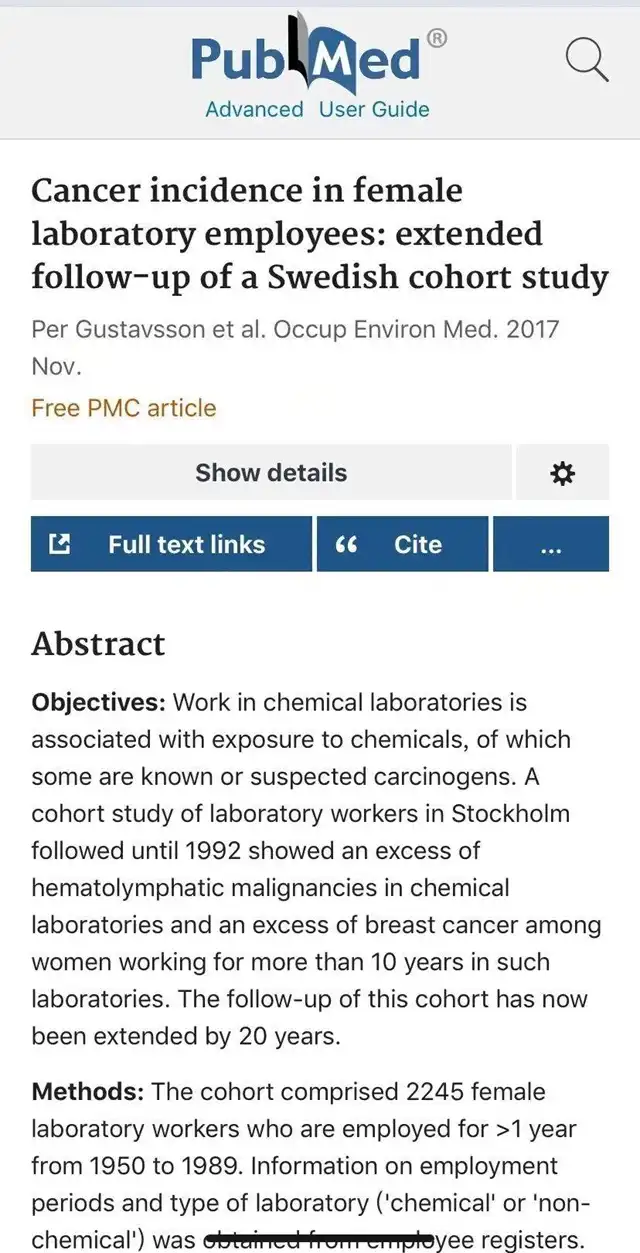Can Lab Workers Develop “Collective Cancer”?
- Normal Liver Cells Found to Promote Cancer Metastasis to the Liver
- Nearly 80% Complete Remission: Breakthrough in ADC Anti-Tumor Treatment
- Vaccination Against Common Diseases May Prevent Dementia!
- New Alzheimer’s Disease (AD) Diagnosis and Staging Criteria
- Breakthrough in Alzheimer’s Disease: New Nasal Spray Halts Cognitive Decline by Targeting Toxic Protein
- Can the Tap Water at the Paris Olympics be Drunk Directly?
Can Lab Workers Develop “Collective Cancer”?
- Should China be held legally responsible for the US’s $18 trillion COVID losses?
- CT Radiation Exposure Linked to Blood Cancer in Children and Adolescents
- FDA has mandated a top-level black box warning for all marketed CAR-T therapies
- Can people with high blood pressure eat peanuts?
- What is the difference between dopamine and dobutamine?
- How long can the patient live after heart stent surgery?
Can Lab Workers Develop “Collective Cancer”?
Can the use of various biological compounds in cancer research laboratories pose a risk to the lab personnel due to their low concentrations? Is the risk of cancer higher among laboratory workers compared to the general population?
China Research Team Faces Allegations of Collective Cancer Due to Reagent Leakage
In 2007, an article titled “Slightly Higher Risk of Cancer Among Lab Workers” was published in the Jerusalem Post. According to a study by the Israeli Ministry of Health, the incidence of cancer among laboratory workers was slightly higher than those not working in labs.
Over 9,000 hospital, health fund, and university laboratory workers, mostly women, were surveyed, with most having worked for 20 years or more. The study found 1.2 cancer patients per 1,000 individuals in the lab worker group, compared to 1 cancer patient per 1,000 individuals in the control group. Breast cancer was more common among lab workers, along with melanoma (skin cancer), lip cancer, and non-Hodgkin’s lymphoma.
Following this study, the Israeli Ministry of Health established a committee to develop safety plans for laboratory workers across the country exposed to chemicals, radiation, and other potential hazards. The research reflected the working conditions of the 1980s and 1990s, stating that conditions and safety have significantly improved since then, potentially reducing the cancer risk for laboratory workers today.

But what is the reality?
According to a December 2000 study in the American Journal of Industrial Medicine, researchers reviewed 45 published studies on the cancer risk among biological researchers and closely related field workers. The conclusion suggested that biological researchers might have an increased risk of pancreatic cancer, brain tumors, and certain blood diseases. Overall, the study indicated a potentially higher risk of pancreatic cancer (risk ratio range of 0.5 to 6.3), brain cancer (0.7-9.4), and non-Hodgkin’s lymphoma (0.6-51.5) among researchers.

Another study in 1999, titled “Mortality and Cancer Incidence Among Medical Research and Routine Laboratory Technicians (Sweden),” investigated the mortality and cancer incidence of 2,553 female and male laboratory workers employed at the Stockholm Karolinska Institute and Hospital between 1950 and 1989.
The results showed an increased standardized incidence rate (SIR) of lymphoma among lab workers exposed to high chemical contact. After more than 10 years of working in high-exposure labs, female workers had an increased risk of breast cancer, and malignant melanoma cases exceeded expectations.

This study suggests the need for continuous monitoring of chemical handling procedures and ventilation equipment in laboratories. From international retrospective studies in industrial medicine, it is evident that cancer research laboratory workers may have a higher risk of certain specific cancers (breast cancer, brain cancer, non-Hodgkin’s lymphoma, melanoma, etc.). Currently, there is no similar retrospective study conducted domestically.
Can Breast Cancer Cells Splatter into the Eyes and Cause Infection?
In discussions about the collective occurrence of cancer among graduate students at Zhongshan Second Hospital, some readers speculated that it might be due to the modeling reagents in their lab, which were intended to induce tumors in animals but inadvertently affected them. This speculation has caused widespread concern.
So, what happens if cancer cells accidentally splash into the human body during cancer research?
The human immune system has an “anti-tumor immune” mechanism. These antigens are recognized by the immune system, leading to the clearance of cancer cells as an invading pathogen.
When the immune system is functioning normally, it rapidly eliminates these cancer cells, preventing the development of cancer.
In the absence of cancer-inducing agents, the body produces over 3,000 cancer cells daily (generally increasing significantly after adulthood, rare in children, and peaking after the age of 75, known as physiological cancer).
Natural killer cells (NK) in the body specifically attack and eliminate cancer cells to maintain overall health.
Under normal circumstances, the body relies on intact anti-tumor immunity to effectively monitor and eliminate cancer cells, preventing cancer.
If cancerous cells evade immune surveillance for some reason and proliferate to a certain extent, tumor development becomes inevitable.
If the balance between cancer cells and anti-tumor humoral and cellular immunity is disrupted, cancer cells can break through immune surveillance, and cancer slowly develops. Some tumor cells can be found in the peripheral blood, known as circulating tumor cells (CTCs). In most cases, tumors gradually grow from a few cells within organs into larger masses (usually taking one to several years).
Understanding this basic principle of anti-tumor immunity, it can be concluded that the likelihood of laboratory personnel developing cancer due to cancer cells splashing into their eyes is extremely low.
In cancer research, it is common to implant human tumor cells into mice in the laboratory, creating “tumor-bearing mice” for research. These mice, also known as tumor-bearing mouse models, lack normal immune function and do not reject the implanted human tumor cells. After a few weeks, these cells grow into tumor-like masses for scientific experiments.
In such experiments, accidental incidents may occur when injecting human tumor cells into mice, such as the needle penetrating gloves or cells splashing into the eyes or mouth due to mouse movement (although these incidents are very rare, they cannot be completely ruled out). Nevertheless, from a theoretical analysis, the likelihood of such accidents leading to cancer in laboratory personnel is extremely small.
Cancer research has discovered various methods and drugs for detecting and treating cancer, making it a popular field in biomedical research. Since the 1990s, major hospitals and medical schools in China have established numerous laboratories.
It can be said that almost every hospital with an oncology department has a cancer research laboratory, totaling tens of thousands of people. While the risk of collective cancer is not confirmed, managing these laboratories is more challenging than specialized medical research buildings.
Can Lab Workers Develop “Collective Cancer”?
References:
[1] Juan Pérez-Crespo,Multiple Chemical Sensitivity in Chemical Laboratory Workers,2018 Dec;9(4):473-478. doi: 10.1016/j.shaw.2018.03.001. Epub 2018 Mar 9.
[2] 2000 年 12 月;38(6):651-65。doi: 10.1002/1097-0274(200012)38:6
[3] doi:10.1023/a:1008892830922。
[4] https://www.zhihu.com/question/629355942/answer/3280040999
(source:internet, reference only)
Disclaimer of medicaltrend.org
Important Note: The information provided is for informational purposes only and should not be considered as medical advice.



